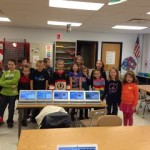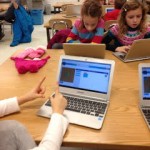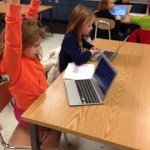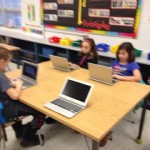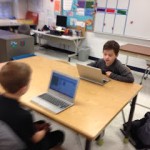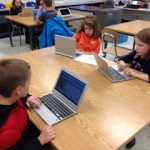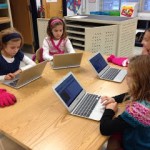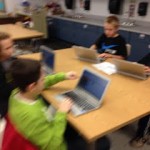In December of 2014 the founders of The Rubber Band Project started a STEAM club at a local Elementary School. The first project we did was more of a one time event rather than a project. We did the Hour of Code.
After about 50 minutes we stopped to put away the Chromebooks and talked about some of the emotions this work brought out. Some student commented that they got frustrated as their characters did not do what they wanted to. Others mentioned they just tried and tried till they got it to work. Some students even commented on the option to get out of the children’s programing tool, and look at the actual code lines they had written. They liked seeing the actual code lines, it was a nice feeling to see what they had created. The frozen code seemed a bit harder than the angry birds code, because it required you to pick the geometric angle that the character should turn. Sure the first turn was 90 degrees, but a later turn turned out to be 30 or 120 degrees. It took some calculation / Guess work to figure out!
We talked a little about how getting frustrated is ok. It’s a part of a challenging situation. We talked about how to deal with that frustration, in this case asking for help, trying a new way, or just taking a break.
A few of our students who finished early took a look online at example of our first project for 2015, a Toothpick Bridge Challenge. They saw what other students had built in toothpick bridge challenges, and we started to talk about the common geometric shapes that the bridges have.
Below are some pictures from our first club meeting. Below that are the common core standards we covered in this project.
*Please contact steve@rubberbandproject if you our your school district are interested in learning more about this project.
CCSS.Math.Content.6.G.A.3 Draw polygons in the coordinate plane given coordinates for the vertices; use coordinates to find the length of a side joining points with the same first coordinate or the same second coordinate. Apply these techniques in the context of solving real-world and mathematical problems.
